Butterfly pea flowers are not just pretty to look at. They have been used for centuries in Southeast Asia for their calming effects and vibrant blue color. They are also known as Clitoria ternatea and are now popular in the U.S. for their natural antioxidants and mood-boosting potential.
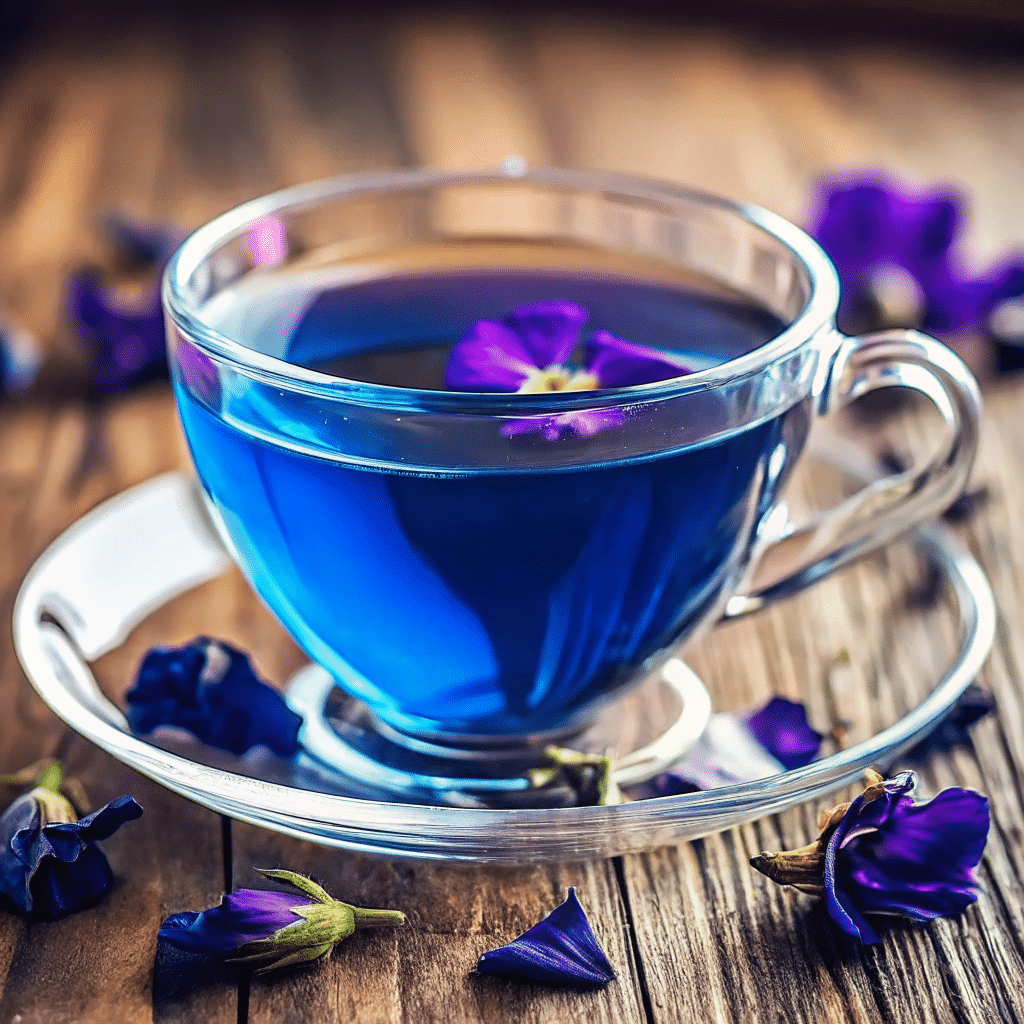
Looking for inspiration? Try this Brazilian mounjaro recipe with apple cider vinegar. It celebrates wellness ingredients like butterfly pea tea.
In this article, you’ll learn what makes butterfly pea flowers special. You’ll find out how they support your health and how to enjoy them safely. We’ll also answer common questions about this trending flower.
Table of Contents
What Are Butterfly Pea Flowers and Why Are They Popular?
What Are Butterfly Pea Flowers?
Butterfly pea flowers come from the plant Clitoria ternatea. They are bright blue and from Southeast Asia. Known for their health benefits, they also add beautiful color.
The dried flowers make a caffeine-free tea. It tastes mild and has a striking blue color.
Why Are They Popular?
These flowers are famous for changing color when mixed with acidic ingredients. This can turn them from blue to purple or pink. They are also packed with antioxidants.
They are used in wellness drinks, lattes, smoothies, and even rice dishes. People love them for their soothing effects, health benefits, and how they look on Instagram.
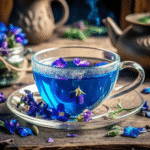
Butterfly Pea Flowers: 7 Stunning & Proven Benefits You Need to Know
Sofie NienhausIngredients
- 1 tsp dried butterfly pea flowers
- 1 cup hot water
- 1 tsp honey optional
- 1 slice of lemon optional
Instructions
- Add dried butterfly pea flowers to a teacup – I recommend this one from my experience on Amazon.
- Pour hot water over the flowers.
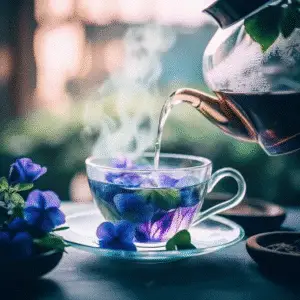
- Let steep for 5–7 minutes.
- Strain into a clean cup.
- Add lemon juice if desired to watch the color shift from blue to purple.
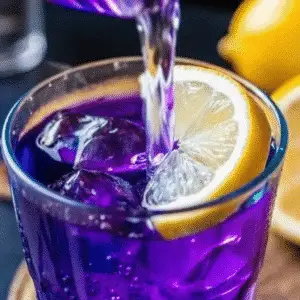
- Sweeten with honey if preferred.
- Stir and enjoy hot or serve over ice.
Notes
- Lemon juice transforms the tea from blue to purple.
- For the best visual effect, use clear glassware.
- Serve immediately after brewing for the freshest taste.
- For optimal results, we recommend using these butterfly pea flowers and this stylish glass to enhance your detox experience.
Nutrition
How Butterfly Pea Tea Affects Your Body and Mood
Nutritional and Antioxidant Properties of Butterfly Pea Flowers
Butterfly pea flowers are rich in health-supporting compounds. The most important ones include anthocyanins, flavonoids, and vitamins that offer powerful antioxidant and anti-inflammatory effects. These nutrients protect cells, fight oxidative stress, and promote overall wellness.
| Nutrient or Compound | Benefit |
|---|---|
| Anthocyanins | Fights inflammation, supports brain and eye health |
| Ternatins | Gives the flower its blue color and acts as an antioxidant |
| Flavonoids | Strengthens immune function and helps prevent cell damage |
| Catechins | Boosts metabolism, supports heart health |
| Vitamins A, C, E | Promotes skin, vision, and immune system health |
Don’t miss our gut microbiota and weight loss journey to explore how antioxidants like these impact your gut and overall wellness.
Key Benefits of Butterfly Pea Tea for Your Mind and Body
| Benefit | Description |
|---|---|
| Brain Function | Enhances memory, focus, and mental clarity with nootropic properties |
| Mood Balance | Naturally reduces stress and anxiety without drowsiness |
| Vision Support | Traditional use to improve eyesight and reduce eye fatigue |
| Detox Support | Assists the liver in flushing toxins; promotes natural detoxification |
| Anti-Aging | Antioxidants slow cellular aging and protect collagen for better skin and hair |
| Immune System Boost | Strengthens the body’s defenses against illness and inflammation |
| No Jitters or Crashes | Provides calm energy without caffeine or stimulants |
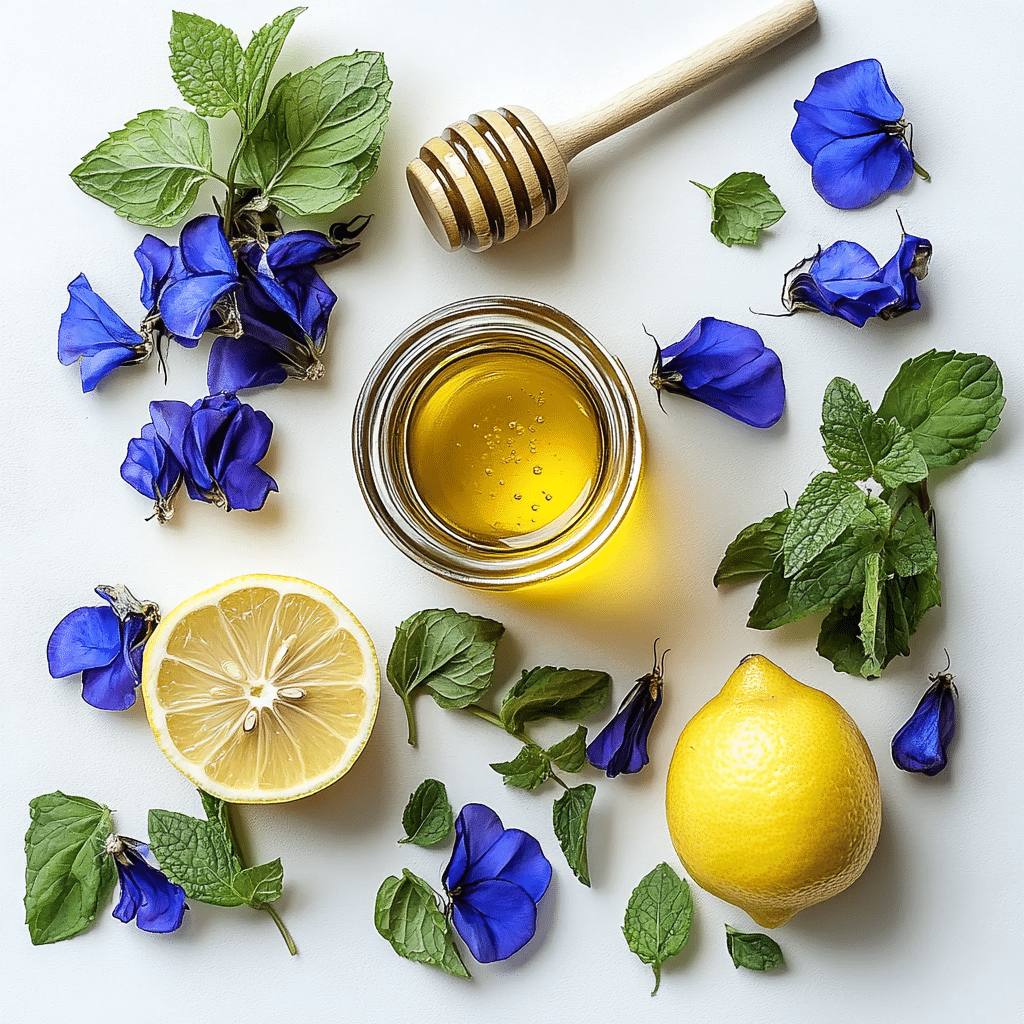
Looking for inspiration? Try homemade mounjaro recipe for another herbal-based wellness drink to pair with butterfly pea tea.
Are There Any Side Effects of Butterfly Pea Flowers?
While butterfly pea flowers are generally safe for most people, especially when consumed as tea, it’s still important to understand the potential side effects and situations where caution is necessary.
Mild Side Effects and Reactions
Most people can drink butterfly pea tea without issues, but some may experience mild side effects, particularly with overconsumption. These can include:
- Upset stomach: In rare cases, drinking too much tea may lead to nausea or gastrointestinal discomfort.
- Dizziness or headache: High doses or concentrated extracts might cause minor headaches in sensitive individuals.
- Allergic reactions: Though uncommon, some people may have allergic sensitivity to the plant—especially if they are sensitive to legumes, as butterfly pea is part of the pea family.
It’s always best to start with a small amount and observe how your body reacts before making it a daily habit.
Who Should Not Drink Butterfly Pea Flower Tea?
While this herbal tea is non-toxic and caffeine-free, certain groups should consult a healthcare provider before using it regularly:
- Pregnant or breastfeeding women: There’s not enough evidence on how butterfly pea flower affects pregnancy or nursing, so it’s safest to avoid.
- People on blood sugar medication: Because it may lower blood glucose levels, it could interact with diabetic medications.
- Those on blood thinners or anticoagulants: The flower’s natural bioactive compounds could affect clotting mechanisms, so consult your doctor if you’re taking such meds.
If you’re undergoing surgery or managing a chronic condition, it’s best to avoid herbal teas that may interfere with medications or recovery processes.
Check out Japanese mounjaro recipe if you’re looking for gentle herbal blends that support energy and balance.
How to Drink Butterfly Pea Tea Safely and Effectively
When and How Much to Drink
You can enjoy butterfly pea tea at any time of day since it’s naturally caffeine-free. Most people drink 1 to 2 cups daily, either in the morning for focus or at night to unwind. Use 4–5 dried flowers (or 1 teaspoon) per cup and steep in hot water for 5–7 minutes.
Can You Drink It Every Day?
Yes—daily use is generally safe for healthy adults. Just avoid overconsumption and consult your doctor if you’re pregnant, breastfeeding, or taking medications for blood sugar or clotting.
Simple Tips for Better Results
- Add lemon to enhance flavor and antioxidant absorption
- Pair with honey or ginger for added wellness
- Drink on an empty stomach if tolerated
Discover great ideas like kcd2 potion recipes for other creative herbal tea infusions.
Buying Guide – Butterfly Pea Flowers Near Me and Online
Where to Buy Butterfly Pea Flowers
You can find butterfly pea flowers at:
- Health food stores and herbal markets
- Asian grocery stores, especially Thai or Indonesian sections
- Online retailers like Amazon, Etsy, or specialty tea shops
When buying online, look for organic, non-GMO labels and check for reviews confirming freshness and color quality.
Choosing Between Dried Flowers, Powder, or Tea Bags
There are several forms available:
| Form | Best For |
|---|---|
| Dried flowers | Brewing traditional tea, cocktails |
| Powdered form | Lattes, smoothies, and baking |
| Tea bags | Convenience and travel-friendly use |
Dried flowers offer the most versatility and visual effect, especially for DIY recipes and color-changing drinks.
Storage Tips for Freshness
To preserve color and potency:
- Store in an airtight container
- Keep away from light, heat, and moisture
- Use within 6–12 months for best results
Check out natural mounjaro recipe for more wellness-focused pantry staples.
Butterfly Pea Flower Tea and Pets – Is It Safe?
Is Butterfly Pea Flower Safe for Dogs and Other Pets?
While butterfly pea flowers are generally safe for humans, their effects on pets are less well-studied. According to available research and anecdotal evidence, the flower itself is not considered toxic to dogs or cats in small amounts. However, that doesn’t mean you should start sharing your tea with your pet.
The ASPCA doesn’t list Clitoria ternatea as a known toxin, but experts still recommend avoiding herbal teas in pet diets unless cleared by a veterinarian.
Risks of Herbal Teas for Animals
Some potential concerns include:
- Stomach upset: Pets may react poorly to concentrated herbal infusions
- Unknown interactions: Herbal compounds can interact with medications or medical conditions
- Added ingredients: Lemon, honey, or essential oils often added to human tea can be harmful to pets
To be safe, keep butterfly pea tea out of reach of pets, and never offer it unless your vet gives the okay.
How to Use Butterfly Pea Flowers in Drinks and Recipes
How to Make Butterfly Pea Tea (Simple Step-by-Step Recipe)
Brewing butterfly pea tea at home is easy, refreshing, and a little magical. The tea’s vivid blue color and color-changing properties make it a favorite for wellness lovers and party hosts alike.
Ingredients:
- 1 tsp dried butterfly pea flowers
- 1 cup hot water
- 1 tsp honey (optional)
- 1 slice of lemon (optional)
Instructions:
- Add dried butterfly pea flowers to a teacup – I recommend this one from my experience on Amazon.
- Pour hot water over the flowers.
- Let steep for 5–7 minutes.
- Strain into a clean cup.
- Add lemon juice if desired to watch the color shift from blue to purple.
- Sweeten with honey if preferred.
- Stir and enjoy hot or serve over ice.
It’s a naturally caffeine-free, soothing drink that fits any time of day.
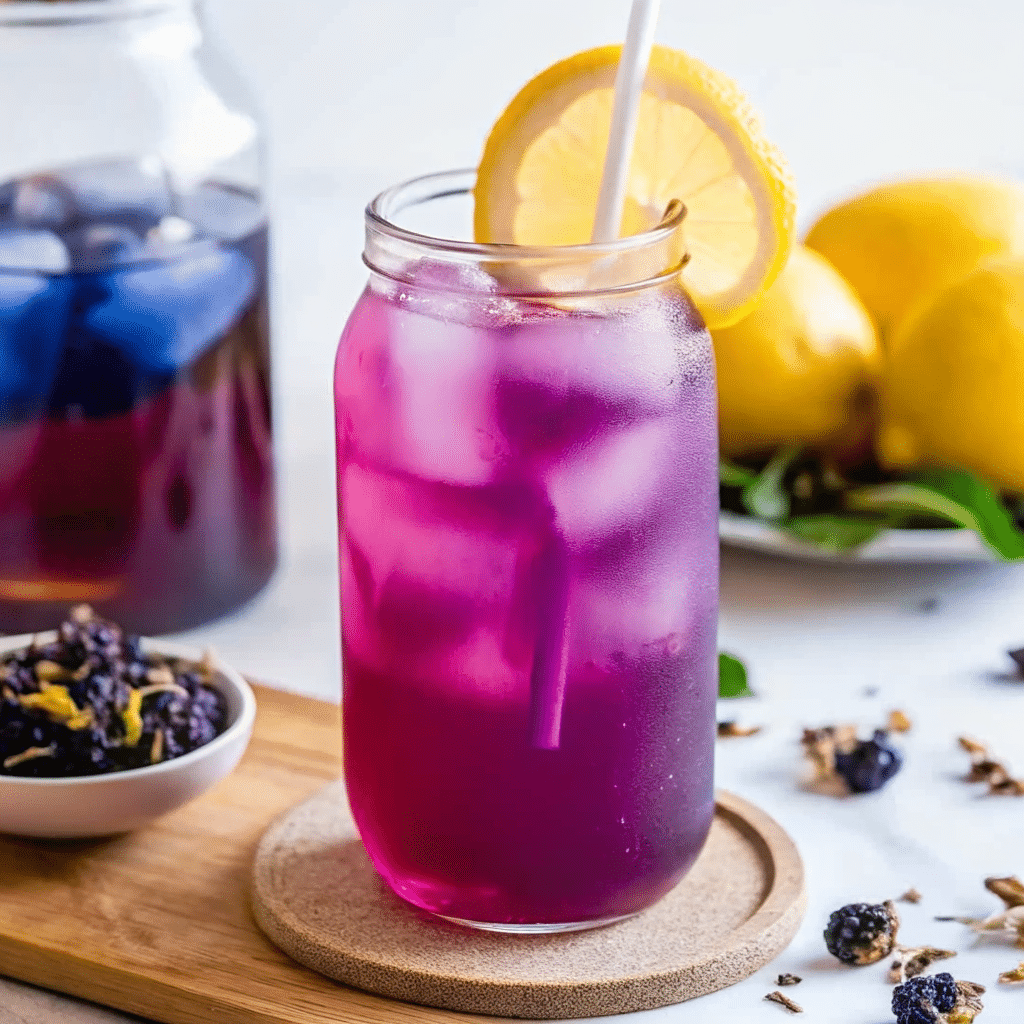
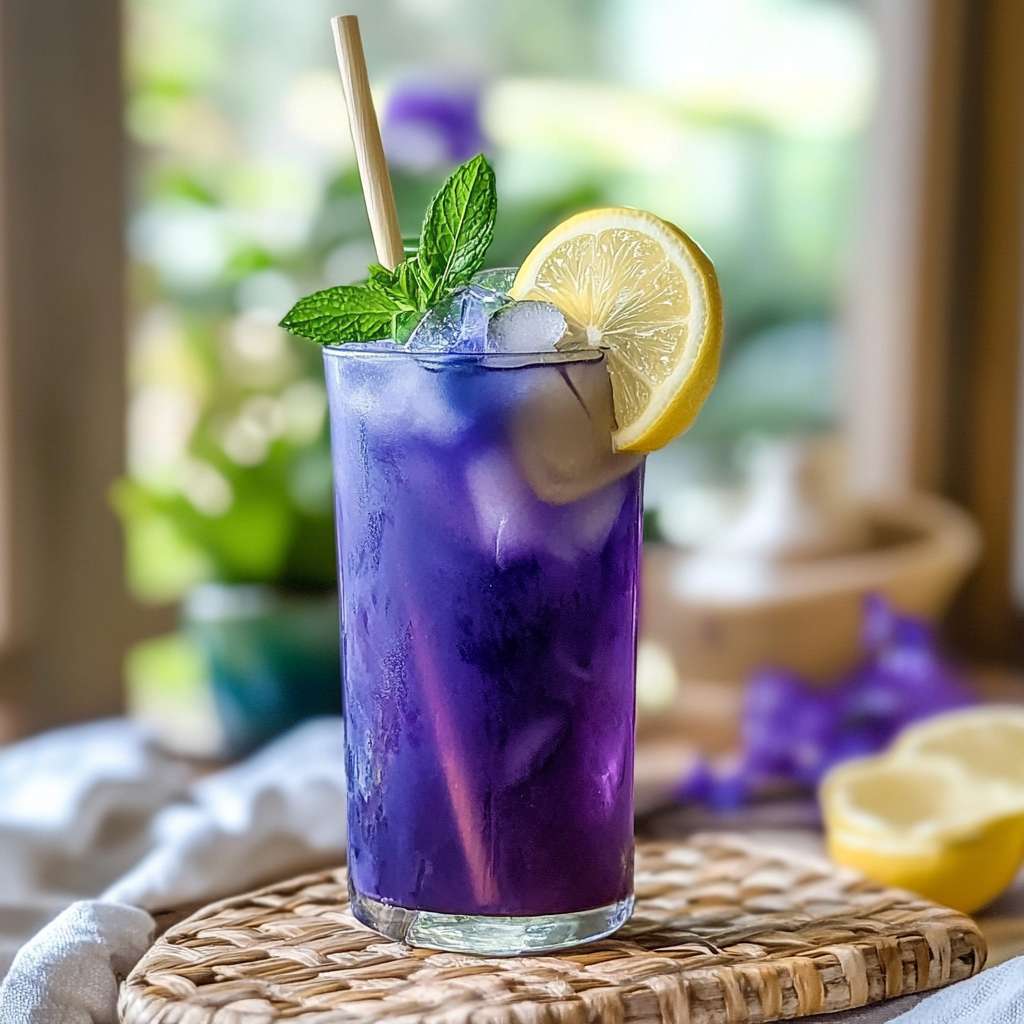
Creative Ways to Use Butterfly Pea Flowers in Recipes
These beautiful flowers aren’t limited to tea—they shine in drinks, dishes, and desserts too. Here are some fun ideas to try:
| Recipe Idea | Usage & Benefit |
|---|---|
| Color-Changing Lemonade | Combines butterfly pea tea, lemon, and ice for a visual treat |
| Coconut Butterfly Latte | Mix with steamed coconut milk for a creamy, vibrant herbal latte |
| Blue Sticky Rice | Infuse cooking water with tea to color rice naturally |
| Mocktails & Cocktails | Add for drama and natural color in layered drinks |
| Herbal Ice Cubes | Freeze brewed tea into cubes for fun iced beverages |
These recipes are not only stunning—they deliver real health benefits from the flower’s antioxidants and calming properties.
Check out pink salt diet recipe to match these drinks with healthy, flavorful snacks.
🟦 7 Stunning & Proven Benefits of Butterfly Pea Flowers
Butterfly pea flowers are more than just a pretty face in your tea. They have scientifically backed and traditionally trusted benefits.
| Benefit | What It Does |
|---|---|
| Supports Cognitive Function | Enhances memory, learning, and focus through natural nootropic compounds |
| Promotes Relaxation Without Drowsiness | Calms the mind and reduces anxiety without sedating effects |
| Rich in Antioxidants | Helps neutralize free radicals and reduce inflammation |
| Aids Blood Sugar Balance | May support insulin sensitivity and slow glucose absorption post-meal |
| Improves Skin and Hair Health | Boosts circulation and cell repair, promoting a radiant complexion and hair |
| Naturally Enhances Vision | Used in traditional medicine to support healthy eyesight |
| Visual Appeal & Color-Changing Magic | Turns vibrant blue to purple with lemon—great for drinks and recipes |
These 7 core benefits show why butterfly pea tea is a hit worldwide. It’s not just for its taste but for its many health benefits.
Conclusion
Whether you’re sipping it for relaxation, using it to brighten your meals, or exploring its health perks, butterfly pea flowers bring more than just beauty to the table. From antioxidants and brain support to skin, mood, and digestive benefits, this vibrant flower offers a unique mix of wellness and wonder—naturally and safely.
If you’re curious about holistic, herbal ways to support your body without caffeine or additives, butterfly pea tea is a gentle, effective option to start with. Just be mindful of dosage and personal sensitivities, especially if you’re on medication or caring for pets.
Butterfly Pea Flowers offer beauty and wellness in one, prized for their natural color and calming properties. Great for herbal drinks and eye-catching recipes! For more inspiring and easy recipes, follow Best True Homemade on Facebook for daily ideas that brighten your kitchen.
Find more colorful and healthy creations on How To Cook Today on Pinterest and make your meals both beautiful and nourishing!
FAQs About Butterfly Pea Flowers
What is butterfly pea flower good for?
Butterfly pea flowers are widely known for their natural antioxidants, calming properties, and brain-boosting effects. They may help improve focus, reduce stress, support skin and hair health, and balance blood sugar. The tea also supports digestion and provides hydration without caffeine.
Who should not drink butterfly pea flower?
While butterfly pea tea is generally safe, people who are pregnant, breastfeeding, or on medications for blood sugar or blood thinning should consult a doctor before drinking it regularly. It’s best to avoid it before surgery or during medical treatments unless approved by a healthcare provider.
What are the side effects of butterfly pea flower?
Most people experience no side effects. However, high doses may cause mild issues like stomach upset, dizziness, or headaches. Allergic reactions are rare but possible. Stick to 1–2 cups daily, and listen to your body.
Can I drink butterfly pea tea every day?
Yes, you can drink butterfly pea tea daily in moderate amounts. It’s safe for most healthy adults and can be enjoyed hot or iced. Just avoid overuse, especially in concentrated extracts or if you have any medical conditions.
Is butterfly pea flower legal?
Yes, butterfly pea flower is completely legal in the United States and many other countries. It’s sold in stores and online as an herbal tea, dried flower, or natural food colorant. There are no current restrictions on its use.
Is butterfly pea flower poisonous to dogs?
Butterfly pea flowers are not known to be toxic to dogs, but that doesn’t mean they’re completely safe. Herbal teas may irritate your pet’s stomach, and added ingredients like lemon or honey can be harmful. Always consult your vet before giving your dog anything outside its usual diet.
